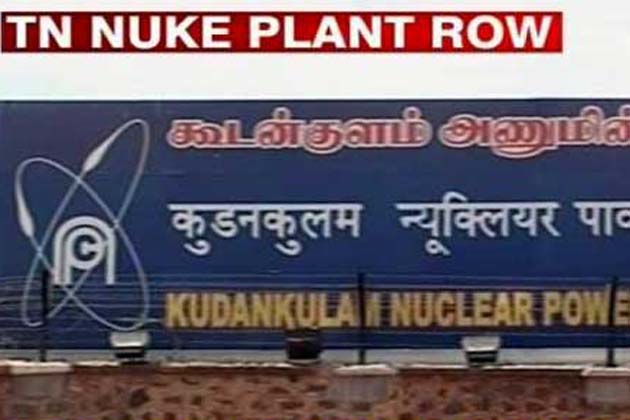
The Anna Hazare-led Lokpal movement saw Prime Minister Dr. Manmohan Singh receiving a lot of flak for keeping mum on key issues and not taking a clearer stance on his govt.’s attitude vis-à-vis the logjam. Many a poster and parody went viral on the internet depicting him as the ‘silent spectator’. So when Mr. Singh breaking his norm directly blamed the US for the ongoing nuclear row, it was bound to stir up a hornet’s nest. In the interview published in the Science journal, he categorically blamed US-backed agencies for stalling work at the plant. The usual protests and criticisms from the opposition on his remarks were predictable. Nevertheless, such strong words from the soft-spoken Prime Minister did raise my attention upon the question–Did the Govt. goof up on the NGO–US link-up? Or did this sudden outburst of Mr. Singh really have meat in it?

The Kundakulam nuclear power plant is an Indo-Russia joint collaboration whose agreement was signed way back in 1988 between the then Prime Minister late Rajiv Gandhi and his Soviet counterpart Mikhail Gorbachev. It can be said to be one of the outcomes of the long legacy of Indo-Soviet friendship, something which the US isn’t comfortable with even in the post-Cold War era. The US had opposed it then, citing India’s non-compliance on signing the Nuclear Non-Proliferation Treaty (NPT). If we look back a little, we can find that except for the Indo-US civilian nuclear deal the track record of the US’s cooperation in meeting India’s growing energy needs isn’t that rosy. The US has long been coercing India into entering the Kyoto Protocol which puts legally binding terms on the countries to cut carbon emissions, something which a developing country like ours can’t afford to do so at the moment.
Quite recently, India’s crude oil import from Iran came under strong US criticism with anti-India groups in the US even accusing her of supporting Iran’s clandestine nuclear operations. They turned a blind eye to the fact that India is actually reducing her dependence on Iranian crude over the years and that a constant supply of crude is inevitable for a power-hungry India. Against this backdrop, it is almost co-incidental to believe that there must be some truth in Mr. Singh’s remarks. All these circumstantial evidences notwithstanding, what is really like the last nail in the coffin is the release of the Home Ministry report revealing that many of the protesting NGO’s are diverting their funds received from the US aid agencies to sponsor the Kundakulam protests.
Now who is directing them to divert the funds meant for development activities like sanitation, healthcare and education to the nuclear protests is anybody’s guess. This comes at a time when all the concerns surrounding the nuclear power plant have been thoroughly addressed by the various agencies. The plant has been constructed using the latest safety protocols and has been proved by the experts to be seismically safe. The fears of adverse impact on the fishing community as well as the alleged increased risk of cancer have all been allayed.
After the Fukushima disaster it is natural for the local populace to get panicky about a nuclear power plant coming up in their neighbourhood. But the one major difference, which is often overlooked, between Fukushima and Kundakulam is that Fukushima was constructed on the beachfront having soft soil where the latter is being constructed on solid rock foundation. Of course, local sentiments have to be granted the first priority but when protests led by a handful of NGO’s turn a blind eye to all scientific reasoning, that’s when things start to look a little fishy. India cannot backtrack on the nuclear plant now for she has already invested a whopping 17,000 crore rupees on the project and on top of that, Tamil Nadu is facing an acute power shortage of 1000MW which will only get aggravated in the days to come. The proposed plant will provide the state with 924MW of electricity thereby normalizing the current crisis to a large extent. With coal-based power plants fast depleting, nuclear power is the only fast and viable option left to reduce India’s huge power input-output deficit.
Eminent scientists like Dr. APJ Abdul Kalam, Atomic Energy Commission Chairman Srikumar Banerjee and others have vouched for the plant’s safety and have appealed to the NGO’s but to no avail. Perhaps that’s what forced Mr. Singh to break his customary silence. It would be interesting to note how the Govt. takes matters further ahead. If they give in to the Opposition demand of making the Home Ministry report public then there is a high possibility of the report containing some sensitive data that might be detrimental to Indo-US relations. The govt. would definitely not want to do so then.
While the odds are in favour of Mr. Singh at present, he must bear in mind that ‘actions speak louder than words’. He would have to match his words with his actions against the NGO’s, which can be discreet if need be, and reach out further to the public in dissipating their fears at the earliest so that Kundakulam nuclear power plant can see the light of the day. Some more direct and definite words from the PM are desirable, lest this whole matter resembles another goof-up by the Govt. and people take the opportunity to label him again as the ‘silent spectator’.
| This is a Guest Post by Manish Parashar. He is a B.E. Mechanical Engineering student at the Manipal Institute of Technolgy, Manipal. |

well, strange are the ways things move , but then why rule out a Chinese hand who might perhaps be routing their funds through US NGOs ofcourse with their tacit support? Afterall a ‘nuclear’ powered centre so close to Hambantota, Sri Lanka – another ‘pearl’ in the Chinese ‘string’- doesn’t augur well for our beloved neighbours!